Voting is how we express our power in our democracy. It is how we peacefully use our voices to affect countless outcomes in our lives — including our access to public education, affordable housing, basic health care, employment opportunities, and disaster relief, to name a few. Voting is our foundational right. When that right is infringed upon, our democracy weakens exponentially.
On August 6, 1965, President Lyndon B. Johnson signed the Voting Rights Act (VRA) into law, enshrining protections for voters across the country who were historically denied access to the ballot box. The VRA was one of the most significant achievements of the Civil Rights Movement, ending discriminatory voting practices, and providing voters across the country with essential tools to fight discriminatory election rules and practices in various forms.
Smith v. Allwright was a landmark 1944 Supreme Court decision that struck down Texas’ all-white primary election system that had disenfranchised Black voters for decades. LDF Founder Thurgood Marshall argued that since primaries were a controlling factor in elections, the exclusion of Black voters from the Democratic primary election in Texas violated the 14th and 15th Amendments to the U.S. Constitution. The Supreme Court eventually agreed and struck down all-white primaries in an 8-1 decision on April 3, 1944.
Smith v. Allwright laid the groundwork in the political battlegrounds of the South for the Voting Rights Act of 1965. The impact was swift and far-reaching: In 1944, an estimated 200,000 Black people in the South were registered to vote. By 1952, 1 million Black voters were registered.
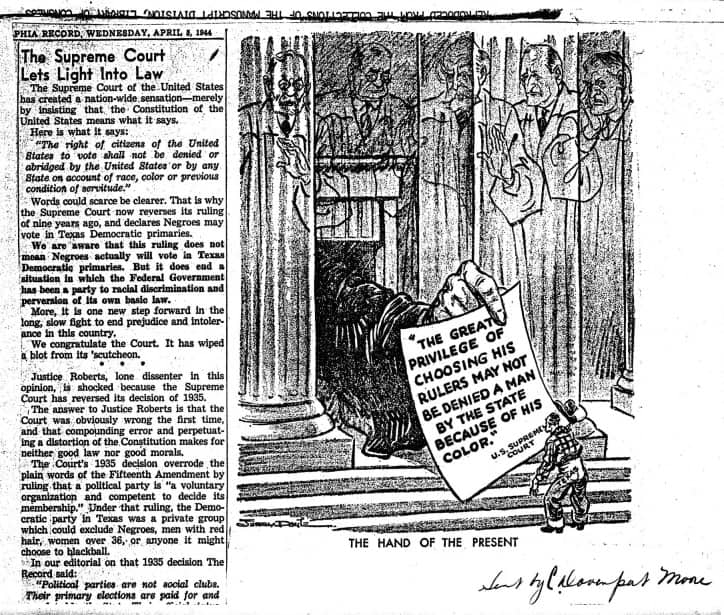
In March 1965, Black civil rights leaders and advocates from across the South gathered in Alabama to march from Selma to Montgomery to demand their right to vote and participate fully in our democracy. However, the march quickly turned horrific, as police forces mercilessly attacked and beat countless marchers.
What unfolded on the Edmund Pettus Bridge on Bloody Sunday struck at our nation’s core, exposing the fault lines of a nation that declared itself a democracy while allowing its citizens to be beaten and bloodied by police and state troopers for demanding their right to vote. The events of Bloody Sunday demonstrated to President Johnson that the Civil Rights Movement could not wait any longer for the Voting Rights Act. The VRA was enacted five months later.
On Aug. 6, 1965, President Johnson signed the Voting Rights Act of 1965 into law. The VRA was one of the most significant achievements of the Civil Rights Movement, ending discriminatory practices like poll taxes, literacy tests, and grandfather clauses that were used to prevent Black people from exercising their right to vote; establishing visionary “preclearance” requirements that for decades stopped voting discrimination before it occurred; and providing voters with essential tools to fight discriminatory election rules and practices in various forms.
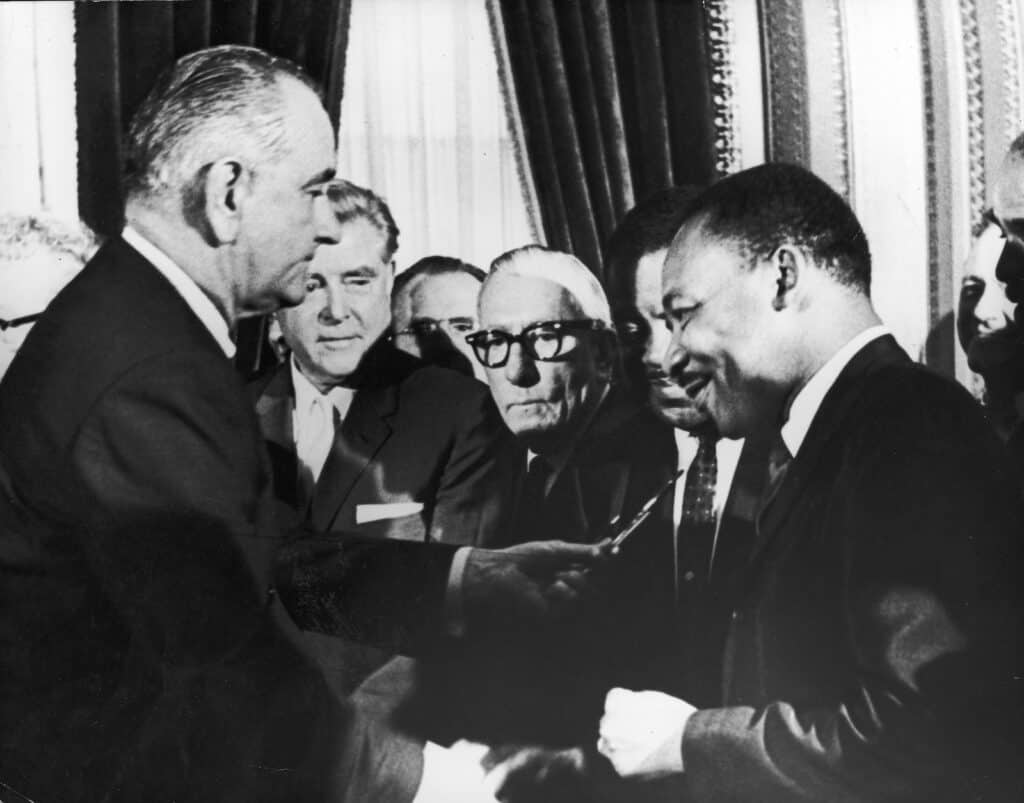
One year after passage of the VRA, LDF’s founder, Thurgood Marshall litigated the landmark South Carolina v. Katzenbach Supreme Court case as U.S. Solicitor General. The decision in this case upheld the VRA as a valid exercise of Congress’ power to enforce the 15th Amendment. This case reinforced the validity of the VRA and solidified the foundation of the legal framework that enabled challenges to discriminatory voting practices for decades to come.
In 1975, Congress passed a group of amendments to the VRA. These provisions extended new protections to certain language speakers across the country, that in turn guaranteed qualified voters access to election materials in their native language. This is known as Section 203, and it targets language minorities that have suffered a history of exclusion from political participation in America’s past. The Census Bureau identifies specific language groups that qualify within specific jurisdictions.
In Thornburg v. Gingles, the Supreme Court found that the system of at-large elections of state legislators in North Carolina illegally diluted Black voting strength in violation of the VRA. In its decision, the court affirmed that that this vote dilution violates the VRA regardless of whether there is proof of discriminatory intent. The case was argued by former LDF Director-Counsel Julius Chambers. This case was a major win in the fight for equal representation for Black communities and redefined redistricting law nationwide.
The case established three preconditions known as the “Gingles Factors” that must be met to prove that a redistricting plan is discriminatory and violates Section 2 of the VRA which prohibits racially discriminatory voting practices and procedure. These preconditions are: “1. A minority group must be sufficiently large and geographically compact to comprise a majority of a district; 2. The minority group must be politically cohesive; and 3. White voters vote sufficiently as a bloc usually to defeat the minority group’s preferred candidate.”
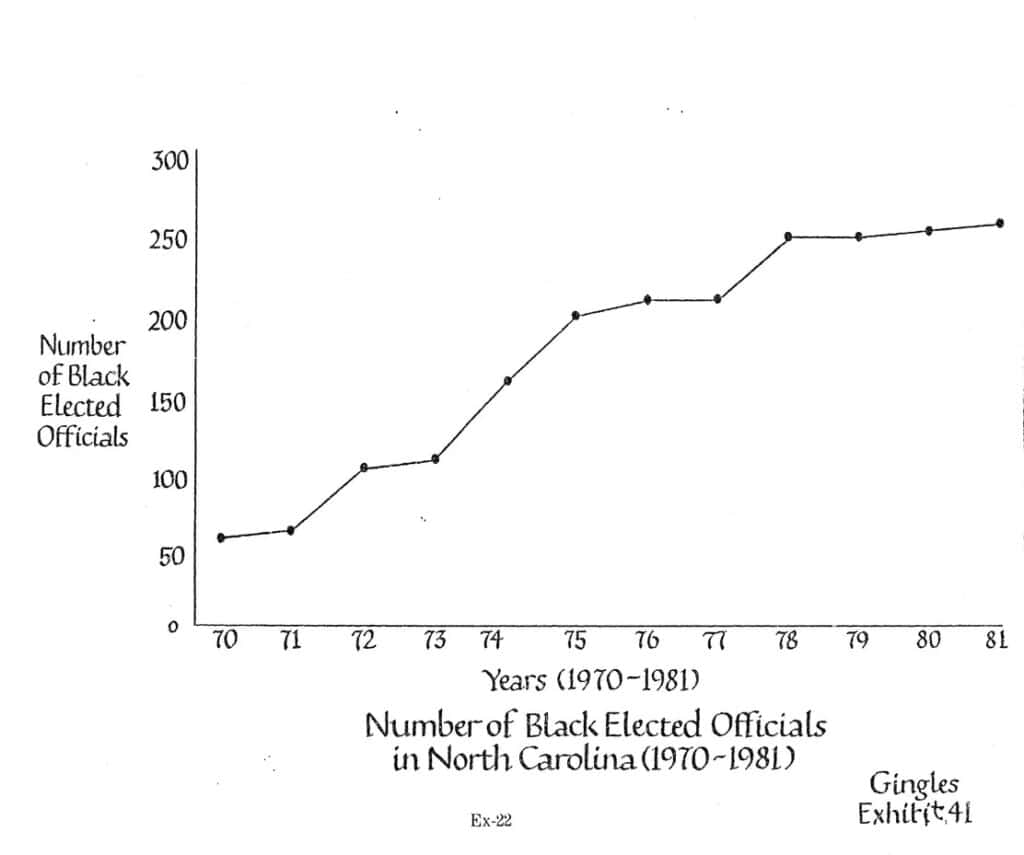
Shelby County v. Holder was a seminal voting rights case that dismantled essential protections originally codified in the VRA. The case was a challenge to the constitutionality of Sections 4(b) and 5 of the VRA. LDF vigorously defended the VRA’s constitutionality at the Supreme Court and in the lower courts.
In a 5-4 decision issued on June 25, 2013, the court struck down Section 4 of the VRA, which included the coverage formula used to determine which jurisdictions were subject to Section 5 preclearance. For decades, preclearance served as democracy’s checkpoint by requiring states and jurisdictions with histories of voter discrimination to seek approval from the Department of Justice or federal courts before making changes to their voting laws. The court held that the coverage formula was outdated and did not reflect the changes to voting disparities that had occurred since the inception of the VRA. The Shelby County v. Holder decision opened the door for the implementation of suppressive voting laws and racial gerrymandering tactics that have severely harmed Black voter power.
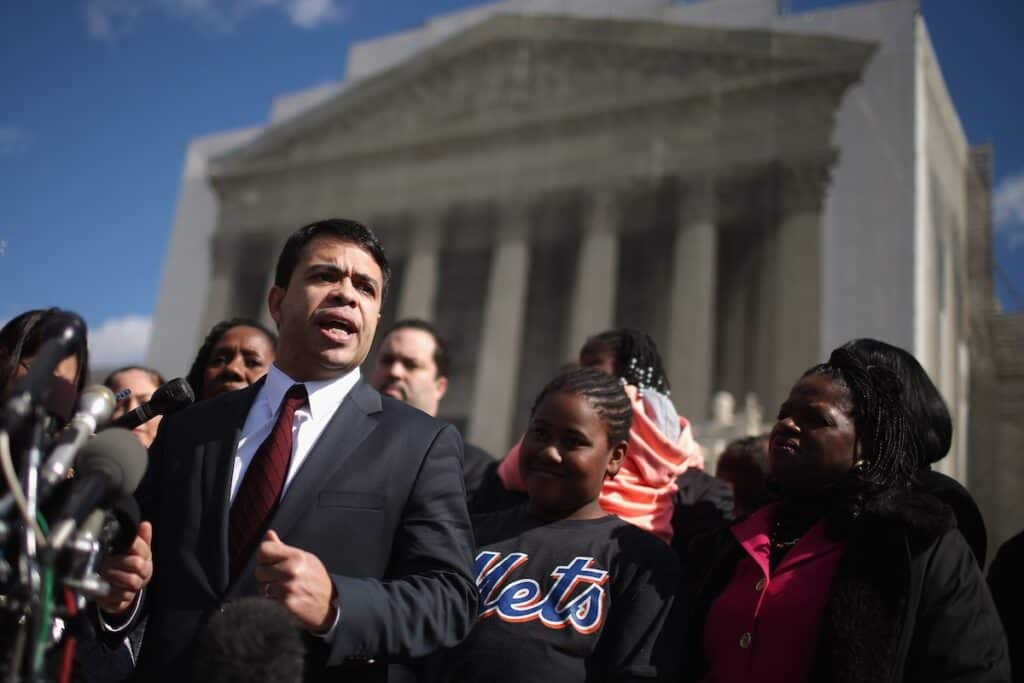
In 2021, Section 2 of the VRA was undercut with the Supreme Court Brnovich v. DNC decision. The Court’s ruling the Court made it more difficult to enforce Section 2 of the VRA, which allows individuals to bring racial discrimination in voting lawsuits to court.
Allen v. Milligan was a landmark redistricting case that successfully challenged Alabama’s congressional map drawn in 2021 for violating Section 2 of the VRA. In a historic win for voting rights, the Supreme Court ruled in favor of Black voters, affirming the district court’s order striking down the congressional map and requiring that Alabama redraw the map to include a second congressional district providing Black voters the opportunity elect candidates of their choice. The case was argued by LDF Director of Litigation Deuel Ross.
In its decision, the court also affirmed that under Section 2 of the VRA, race can be considered in the redistricting process to provide equal opportunities to communities of color and ensure they are not “packed and cracked” in a way that impermissibly weakens their voting strength. Citing the overwhelming evidence of discrimination presented by the plaintiffs in the district court, the Supreme Court decision reaffirmed the legal test for evaluating claims under the VRA established in Thornburg v. Gingles.

Alexander v. South Carolina State Conference of the NAACP was a racial gerrymandering case that challenged South Carolina’s 2022 congressional redistricting map. The lawsuit argued that under the map, Black communities in 1st Congressional District, which contains Charleston County, were targeted and split up in a way that diluted their voting power and denied Black voters an equal opportunity to elect candidates of their choice. LDF Senior Counsel Leah Aden argued the case before the Supreme Court on behalf of Black South Carolina voters.
In a 6-3 decision issued on May 23, 2024, the Supreme Court reversed a federal trial court’s unanimous finding that South Carolina’s 1st Congressional District is an unconstitutional racial gerrymander, allowing South Carolina’s discriminatory congressional map to stand.

Louisiana v. Callais is a redistricting case before the Supreme Court that will determine the future of Louisiana’s congressional map. At its core, Louisiana v. Callais is about equal representation for Black voters in Louisiana and the role of race in redistricting. The court will determine if Louisiana lawmakers properly balanced constitutional and VRA protections when enacting a new congressional map with two majority-Black districts in 2024, following years of litigation under Section 2 of the VRA. LDF’s Redistricting Manager Stuart Naifeh presented oral argument before the Supreme Court on March 24, 2025.
On June 27, 2025 the Supreme Court issued an order to reargue the case next term. Louisiana’s current map with two majority-Black districts remains in effect. The re-argument of the case will likely occur during the fall of 2025.
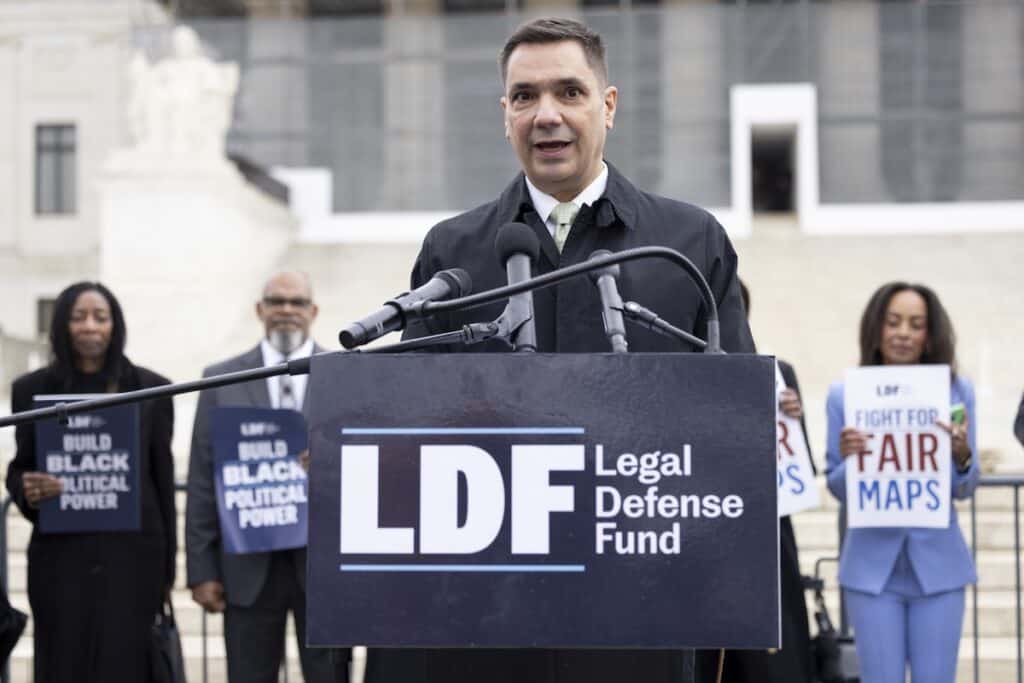
LDF and coalition of voting rights organizations filed a lawsuit to challenge President Trump’s unlawful executive order requiring a passport or similar documentation of citizenship in order to register to vote, effectively attempting to seize voter registration rules from Congress and the states. These requirements would violate federal law and the Constitution if carried out by the Election Assistance Commission (EAC). On April 24, 2025 a federal court blocked the documentary proof-of-citizenship requirement. While the case proceeds, this injunction preserves the status quo. Would-be-voters already affirm under penalty of perjury that they are U.S. citizens on the federal form.
Despite attacks on the VRA , LDF is committed to protecting and expanding voting rights at all costs. From the Supreme Court to Congress to state legislatures, our work does not stop. We will use every tool we can to combat those that are determined to set the United States on a regressive path. Passing State Voting Rights Acts, which provide key protections that prevent and guard against discriminatory voting practices and policies, is currently a top priority. Our voices have value. We must raise them together to make sure that everyone has an equal shot at making a change with their vote.
Voting Rights
State VRAs can provide key protections to their constituents that prevent and guard against discriminatory voting practices and policies. Learn more about LDF’s work to advance state VRAs.
Voting Rights
The Shelby decision opened the door for the implementation of restrictive voting laws and racial gerrymandering that have severely harmed Black voter power.
LDF Original Content
How States with discriminatory maps have shirked their responsibilities to their constituents, paving the way for the passage of oppressive legislation.
